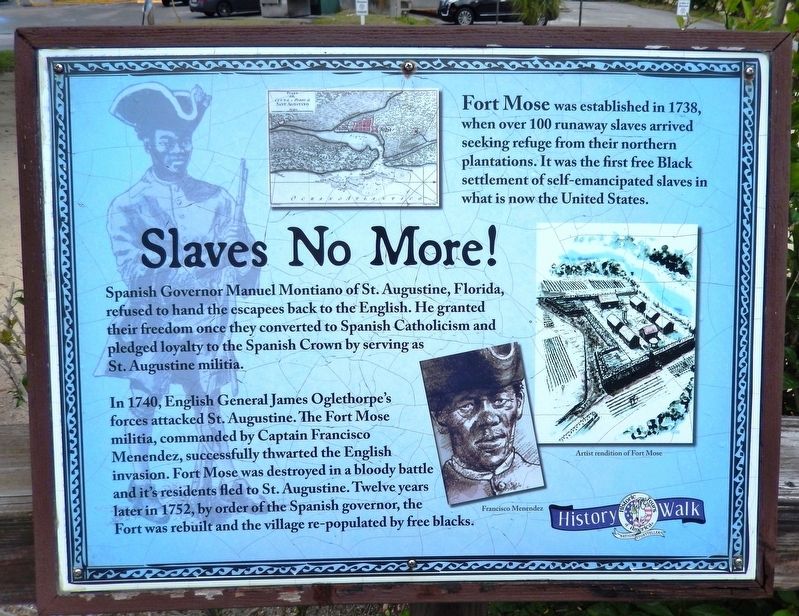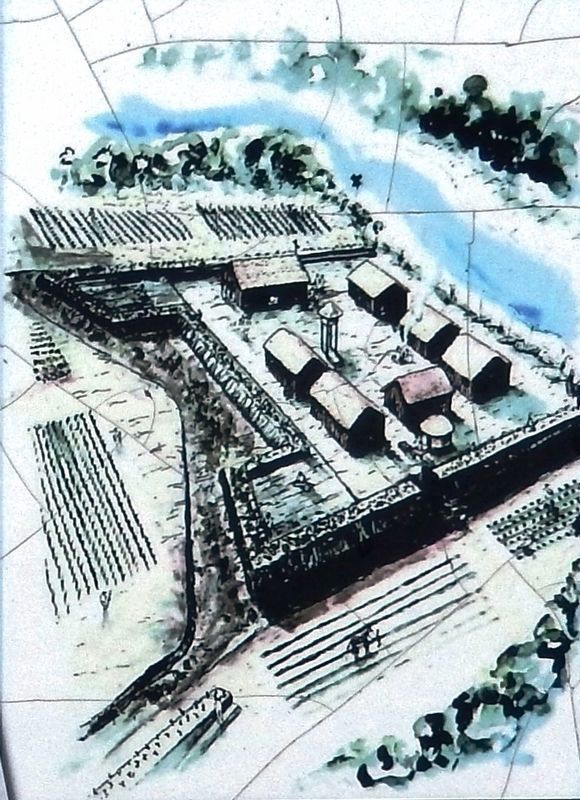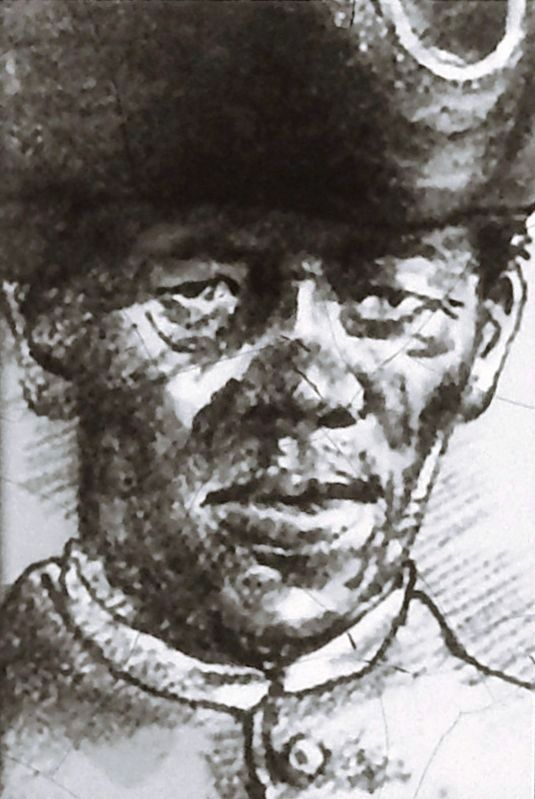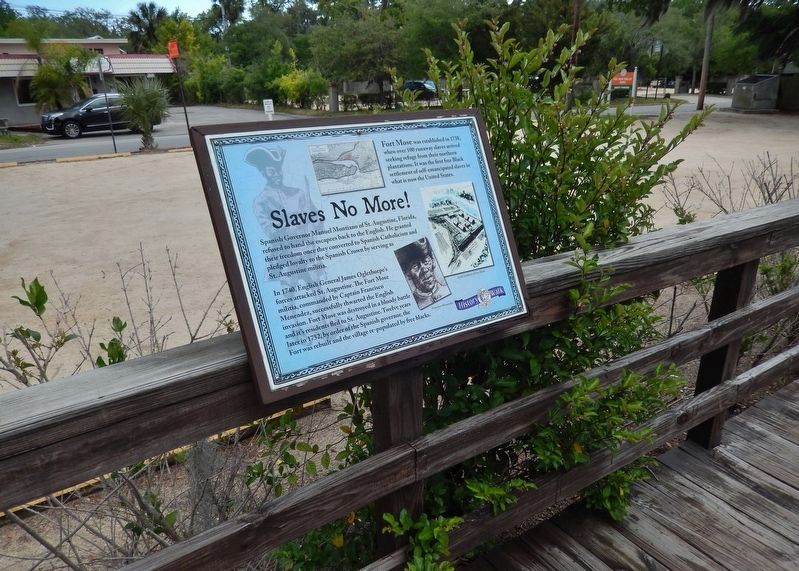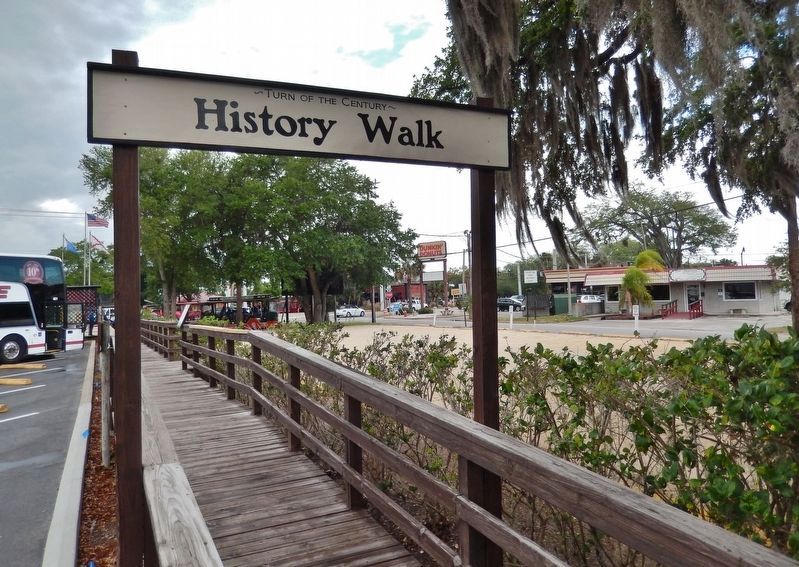St. Augustine in St. Johns County, Florida — The American South (South Atlantic)
Slaves No More
Spanish Governor Manuel Montiano of St. Augustine, Florida, refused to hand the escapees back to the English. He granted their freedom once they converted to Spanish Catholicism and pledged loyalty to the Spanish Crown by serving as St. Augustine militia.
In 1740, English General James Oglethorpe's forces attacked St. Augustine. The Fort Mose militia, commanded by Captain Francisco Menendez, successfully thwarted the English invasion. Fort Mose was destroyed in a bloody battle and its residents fled to St. Augustine. Twelve years later in 1752, by order of the Spanish governor, the Fort was rebuilt and the village re-populated by free blacks.
Erected by Historic Tours of America.
Topics. This historical marker is listed in these topic lists: African Americans • Colonial Era • Forts and Castles • Settlements & Settlers. A significant historical year for this entry is 1738.
Location. 29° 54.505′ N, 81° 19.177′ W. Marker is in St. Augustine, Florida, in St. Johns County. Marker can be reached from San Marco Avenue (Florida Highway A1A) (Business U.S. 1) south of Dufferin Street, on the right when traveling north. Marker is located along the "History Walk" at the north end of the St. Augustine History Museum parking lot. Touch for map. Marker is at or near this postal address: 167 San Marco Avenue, Saint Augustine FL 32084, United States of America. Touch for directions.
Other nearby markers. At least 8 other markers are within walking distance of this marker. Henry Flagler's "Winter Newport" (here, next to this marker); On With The Show (here, next to this marker); Jail on Wheels (a few steps from this marker); Viva Cuba! (a few steps from this marker); Up in Smoke (a few steps from this marker); Chain Gangs (a few steps from this marker); Arriving in Style (a few steps from this marker); Walk to Freedom (within shouting distance of this marker). Touch for a list and map of all markers in St. Augustine.
Related markers. Click here for a list of markers that are related to this marker. Fort Mose Historic State Park
Also see . . . The journey of Africans to St. Augustine, Florida. Fort Mose’s inhabitants were mainly runaway black Gullah slaves from the British colonies of South Carolina and Georgia, who escaped to freedom to Spanish, Florida in small groups at least as early as 1687. In 1738, a member of one of the units, Francisco Menendez, a Mandingo from Africa, petitioned Governor Manuel de Montiano for a grant of land, and in 1738, Governor Montiano authorized a settlement. (Submitted on May 29, 2019, by Cosmos Mariner of Cape Canaveral, Florida.)
Credits. This page was last revised on May 29, 2019. It was originally submitted on May 27, 2019, by Cosmos Mariner of Cape Canaveral, Florida. This page has been viewed 383 times since then and 27 times this year. Photos: 1, 2, 3, 4, 5. submitted on May 29, 2019, by Cosmos Mariner of Cape Canaveral, Florida.
